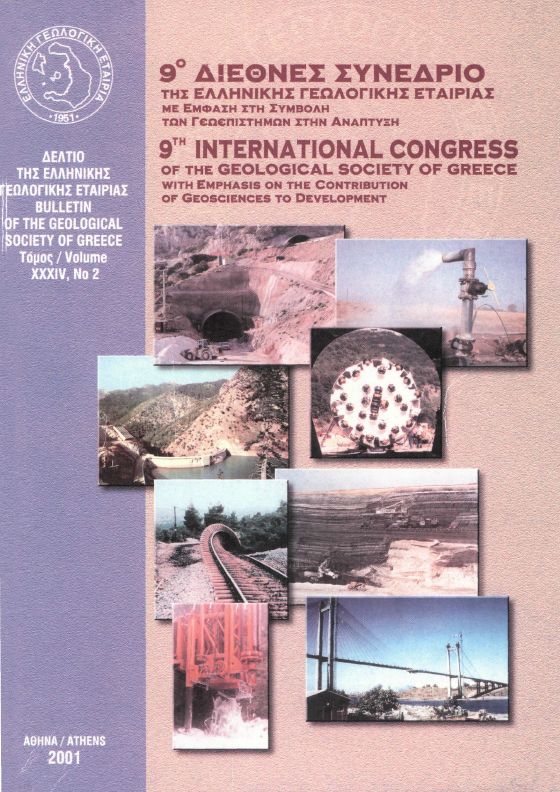GEOMORPHOLOGICAL AND MORPHOTECTONIC ANALYSIS OF MALAKASIOTIS DRAINAGE BASIN (WEST THESSALY-TRIKALA PREFECTURE
Abstract
The Malakasiotiko stream is one of the tributaries of Pinios River in Western Thessaly. The drainage basin of Malakasiotiko stream is located in the northwestern part of the mountainous zone of Trikala Prefecture. In this paper, the drainage network of Malakasiotiko stream has been analyzed. Additionally, the relationship among the tectonism, the growth directions of the watershed lines, and the drainage network. The quantitative analysis of the drainage network has resulted that the geological and tectonic structure of the area affected, and potentially has been affecting its development. The morphotectonic analysis has shown that the watershed lines of the drainage basin and the streams of 1st to 4th order are influenced by alpine structure, whereas the 5th, 6th and the 7th order streams are influenced by neotectonic activity.
Article Details
- How to Cite
-
ΜΠΑΘΡΕΛΛΟΣ Γ., ΣΚΥΛΟΔΗΜΟΥ Χ., ΛΕΙΒΑΔΙΤΗΣ Γ., & ΒΕΡΥΚΙΟΥ- ΠΑΠΑΣΠΥΡΙΔΑΚΟΥ Ε. (2005). GEOMORPHOLOGICAL AND MORPHOTECTONIC ANALYSIS OF MALAKASIOTIS DRAINAGE BASIN (WEST THESSALY-TRIKALA PREFECTURE. Bulletin of the Geological Society of Greece, 38, 123–133. https://doi.org/10.12681/bgsg.18432
- Section
- Geomorphology

This work is licensed under a Creative Commons Attribution-NonCommercial 4.0 International License.
Authors who publish with this journal agree to the following terms:
Authors retain copyright and grant the journal right of first publication with the work simultaneously licensed under a Creative Commons Attribution Non-Commercial License that allows others to share the work with an acknowledgement of the work's authorship and initial publication in this journal.
Authors are able to enter into separate, additional contractual arrangements for the non-exclusive distribution of the journal's published version of the work (e.g. post it to an institutional repository or publish it in a book), with an acknowledgement of its initial publication in this journal. Authors are permitted and encouraged to post their work online (preferably in institutional repositories or on their website) prior to and during the submission process, as it can lead to productive exchanges, as well as earlier and greater citation of published work.






